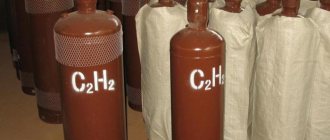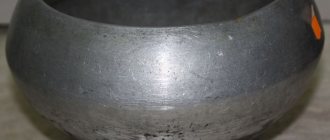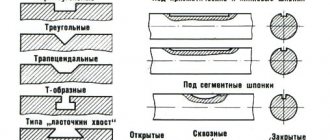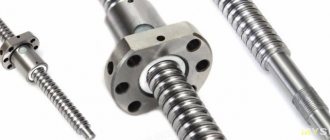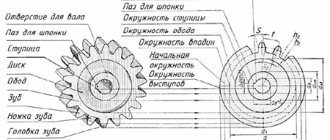Alkynes are unsaturated (unsaturated) non-cyclic hydrocarbons, the molecules of which contain one triple bond between the carbon atoms C≡C.
Let us dwell on the properties, methods of preparation and structural features of alkynes.
Structure, isomerism and homologous series of alkynes
Chemical properties of alkynes
Preparation of alkynes
Alkynes are unsaturated hydrocarbons whose molecules contain one triple bond. The structure and properties of the triple bond determine the characteristic chemical properties of alkynes. The chemical properties of alkynes are similar to the chemical properties of alkenes due to the presence of a multiple bond in the molecule.
Alkynes are characterized by oxidation reactions. The oxidation of alkenes occurs predominantly at the triple bond, although hard oxidation (combustion) is also possible.
Nomenclature
Alkynes and acetylene hydrocarbons are hydrocarbons whose molecules contain at least two carbon atoms that are in a state of sp-hybridization and connected to each other by three bonds.
Alkynes form a homologous series with the general formula CnH2n-2.
The first member of the homologous series is acetylene, which has the molecular formula C2H2 and the structural formula CHCH. Due to the peculiarity of sp-hybridization, the acetylene molecule has a linear structure. The presence of two π-bonds located in two mutually perpendicular planes implies the location of the α-atoms of the substituent groups on the line of intersection of the planes in which the π-bonds are located. Therefore, the bonds of carbon atoms spent on connection with other atoms or groups are rigidly located on a line at an angle of 1800 to each other. The structure of the triple bond system in alkyne molecules is determined by their linear structure.
The structural feature of alkyne molecules suggests the existence of isomerism in the position of the triple bond. Structural isomerism, due to the structure of the carbon skeleton, begins with the fifth member of the homologous series.
1. Isomerism of the triple bond position. For example:
2. Structural isomers. For example:
The first member of the homologous series has the trivial name “acetylene”.
According to rational nomenclature, acetylene hydrocarbons are considered as acetylene derivatives. For example:
According to the IUPAC nomenclature, the names of alkynes are formed by replacing the suffix “an” with “in”. The main chain is chosen so that it contains a triple bond. The numbering of carbon atoms begins from the end of the chain to which the triple bond is closest. If there are double and triple bonds in a molecule, the double bond has a lower number. For example:
The triple bond can be terminal (terminal, such as in propyne) or "internal", such as in 4-methyl-2-pentine.
When naming, the radical -CCH is called “ethynyl”.
Applications of alkynes
The most important and widely used alkynes are acetylene and vinyl acetylene.
A large share of acetylene produced is used for welding and cutting metal. The acetylene-oxygen flame has a temperature of about 3500°C, which makes it easy to melt steel.
Due to its narcotic effects, some acetylene is used in medical practice ( narcilene ).
As a starting material, acetylene is used in the production of compounds of organic synthesis and target chemical products - acetic acid, acetaldehyde, ethanol, chloroacetic acids, isoprene, vinyl acetylene, which is further used in the production of chloroprene rubber, etc.
Categories Alkynes, ORGANIC CHEMISTRY
Pyrolysis of ethylene and methane
Pyrolysis of ethylene and methane at very high temperatures leads to the production of acetylene. Under these conditions, acetylene is thermodynamically unstable, so pyrolysis is carried out in very short time intervals (hundredths of seconds):
The thermodynamic instability of acetylene (explodes even when compressed) follows from the high positive value of the heat of its formation from the elements:
This property creates certain difficulties when storing acetylene and working with it. To ensure safety and simplify work with acetylene, its ability to easily liquefy is used. Liquefied acetylene is dissolved in acetone. A solution of acetylene in acetone is stored in cylinders filled with pumice or activated carbon. Such storage conditions prevent the possibility of accidental explosion.
OBTAINING ACETYLENE FROM CALCIUM CARBIDE
The industrial method of producing acetylene from calcium carbide has existed since the end of the 19th century and has not lost its importance to this day.
The method for producing acetylene consists of two stages:
1) preliminary fusion of calcium oxide and coke in electric furnaces at 2600–3000 °C
CaO+3C = CaC2(calcium carbide) + CO
The reaction is endothermic (occurs with the absorption of heat)
Disadvantage: high electricity consumption: 10000-11000 kWh
per 1 t of acetylene.
Advantage:
1 independence of acetylene production from depletable hydrocarbon and other sources of raw materials;
2 Calcium carbide is easy to transport.
3 acetylene obtained by the carbide method has a high degree of purity - over 99%.
2) Treatment of calcium carbide with water to produce acetylene and lime milk:
CaC2 + 2H2O —— > C2H2 + Ca(OH)2, -DH°298 = 127.1 kJ/mol.
Advantage:
1. ease of implementation of the process during which lime is formed used in construction;
2. decomposition of calcium carbide with water is a highly exothermic reaction (in the future, heat can be used, and acetylene can be used in promising engines)
PRODUCTION OF ACETYLENE FROM HYDROCARBON RAW MATERIALS
Varieties of the method differ in the method of heat supply
a) Electrocracking is used for processing natural gas - methane.
Under the influence of an electric arc with a temperature of 2000--3000°C, methane is heated to 1600°C, resulting in acetylene:
2СН4®(1600 0С)®СНºСН + 3Н2
Electricity consumption is the same as with the carbide method. Acetylene yield 50%.
b) Thermal cracking in regenerative furnaces is carried out in two cycles (batch process):
Cycle I - heating of the furnace nozzle (alumina) due to the combustion of methane at 1350-1400°C;
Cycle II - (cracking phase) - methane is passed through a heated nozzle, methane is cracked, followed by cooling.
To increase the yield of acetylene, cycle II is carried out under a vacuum of 0.2 at. Acetylene yield 35%.
B) Oxidative pyrolysis of methane
According to this method, methane is mixed with oxygen, while part of the raw material is burned, and due to the released heat, the raw material is heated to 1600°C.
11CH4 + O2 Û 2С2Н2 + 6СО + 14Н2 + СО2 + 6Н2О
Acetylene yield is 30-32%.
Due to the continuity of the process and lower energy costs, this method is of the greatest interest, since along with acetylene, synthesis gas (CO + H2) is also formed, used in the production of alcohols by oxosynthesis and methanol.
A type of oxidative pyrolysis is the homogeneous pyrolysis of hydrocarbon gases.
Part of the raw material is burned in a mixture with oxygen in the furnace firebox, the gas reaches a temperature of 2000 0 C. The rest of the raw material, preheated to 600 0 C, is introduced into the gas flow into the middle part of the furnace. Processes of splitting raw materials occur with the formation of acetylene.
The advantage of this method is greater safety and reliability of the furnace, however, fire-resistant materials are required for its manufacture.
Acetylene isolation methods
The acetylene content when produced by various methods in gases is ~15%, and the acetylene yield ranges from 30 to 50%.
Highly concentrated acetylene is isolated from pyrolysis gases on an industrial scale by absorption using selective solvents.
The absorption method is based on the higher solubility of acetylene in various liquid absorbents compared to the solubility of other gas components.
Absorption processes are carried out at normal temperature with selective solvents N - methylpyrrolidone, dimethylformamide and at low temperatures (-70 ° C) with solvents methanol and acetone
BIOMASS AS A SOURCE OF HYDROCARBON RAW MATERIALS
The oil crisis, associated with a sharp increase in prices for oil and petroleum products, and limited fossil fuel resources intensified the search for alternative sources of hydrocarbon raw materials. Therefore, in most countries, in recent years, numerous studies have been carried out on alternative sources of hydrocarbons based on the processing of coal, peat, shale, tar sands and even rocks containing carbon. However, they are all exhaustible. One of the most promising renewable sources of hydrocarbons is biomass.
The amount of plant biomass reproduced annually on the globe is determined to be ~200 billion tons. with a total energy potential of 3 . 1021 J,
which is ~10 times the volume of global fossil fuel production.
However, the collection and subsequent processing of biomass is difficult, because the price of certain types of centrally collected biomass (on a dry basis) is (dollars/t):
wood—18—50; straw—25—35; grain—80—130; cotton waste—5—15; aquatic plants - 100-200.
Conditionally all sources of biomass
can be divided into four main groups.
1. First group. This includes terrestrial plants specially grown for energy purposes, the rotation period of which is 6-10 years (possibly more than 20-40 years with the existing reserves of the territory). With an average number of trees per 1 hectare of 6730, the productivity of such a complex is 250 thousand tons/year
wood (kiln dried mass).
2. Second group. It includes various organic residues and waste, which in turn are divided into:
a) animal biological waste (cattle manure, poultry droppings, etc.);
b) residues from harvesting agricultural crops and by-products of their processing: (rye and wheat straw, corn cob, cotton stalk, peanut shell, potato waste, rice husks and straw, etc.);
c) waste from logging, sawmilling and wood processing: (bark, sawdust, wood chips, shavings, etc.);
d) industrial wastewater (in particular, textile, dairy, and other food processing enterprises);
e) municipal waste (solid and waste water).
3. The third group is aquatic plants - seaweed, giant kelp (brown algae), water hyacinth (they grow very quickly and their energy potential is quite high (t.e./ha/year):
fresh seaweed—29.2, water hyacinth—53.6 (for comparison, sugar cane—40.0).
Abroad, in recent years, extensive research has been carried out on the use of microscopic algae as hydrocarbon raw materials, organizing their cheap mass production in order to produce methane through anaerobic processing of microalgae biomass. Their productivity is very high: they increase their mass in 1 day
3-5 times, which is several times higher than the productivity of tropical trees.
4. The fourth group is fats of plant and animal origin.
Environmentally, all biomass is considered a safer feedstock than fossil fuels. The amount (emission value) of the main pollutants formed during the combustion of any type of biomass is much lower than during the processing of mineral sources. However, the disadvantages of biomass include:
1. high humidity;
2. low calorific value, which is ~ 2 times lower than that of liquid hydrocarbons.
Therefore, to increase the energy potential of biomass and the convenience of its further use, the most promising is the processing of biomass into gaseous or liquid fuel (especially crude bio-oil) by direct thermochemical transformation of biomass with subsequent improvement of its quality to the level of natural hydrocarbon analogues.
Depending on humidity, biomass processing technology
is different and is divided into processing by thermochemical or biological methods.
Thus, when the moisture content in the raw material is <50%, thermochemical conversion of biomass is preferable.
For moisture content >60%, biological processing methods are preferred.
Thermochemical processing methods include: gasification, pyrolysis and liquefaction, which result in the production of liquid and gaseous fuels that have a significantly higher energy intensity than biomass.
Biological ones include anaerobic digestion, ethanol and acetobutanol fermentation.
The general scheme of the thermochemical transformation of biomass is shown in the figure. All these processes take place at high temperatures and sometimes at high pressure.
Gasification of biomass (wood or other lignocellulosic raw materials) is one of the main methods for producing generator or fuel gas. The process is usually carried out in the presence of water vapor with atmospheric oxygen (air blast or steam-air gasification) or with oxygen (oxygen blast or steam-oxygen gasification). The technology for producing such gases, called “generator gas,” is widely used in industry. The biomass gasification process is carried out in gasifiers at atmospheric pressure and temperature ~ 800 0C. In this case, incomplete combustion of the organic matter of the biomass occurs. In a gasifier with air blast, low-calorie gas is usually obtained (heat of combustion - 2.98-5.59 MJ/m 3 ),
and in a gasifier with oxygen blast - medium-calorie gas (heat of combustion 7.45-13.04
MJ/m
3 ). Their composition is given in the table
Gasification
| Components Hydrogen | Steam-air gasification 16.0 | Steam-oxygen gasification 27.0 |
| Carbon monoxide | 32,0 | 30,0 |
| Carbon dioxide | 20,0 | 26,0 |
| Methane | 12,0 | 13,0 |
| Acetylene | 0,2 | 0,1 |
| Ethylene | 4,0 | 3,1 |
| Ethane | 1,0 | 0,6 |
| Hydrocarbons C3 and higher | 0,3 | 0,2 |
| Nitrogen | 14,5 |
According to calculations, from 1 kg
biomass produces 2-3
m3
of gas.
To replace 1 liter
of petroleum fuel (diesel or motor) with gas in internal combustion engines, 3-4
kg
of biomass will be required, and to generate a unit of electricity
(kWh) -
1.2-1.4
kg of biomass.
Pyrolysis of biomass occurs when it is heated in the absence of oxygen to form liquid fuels, gases and coal. There are pyrolysis
1. With one-stage evaporation (yield of liquid products up to 30%);
2. With stepwise evaporation (yield of liquid products up to 40%);
3. Vacuum pyrolysis (yield of liquid products more than 50%).
In all cases, the yield of pyrolysis products depends on the process conditions and the type of raw material.
So, when processing 100 kg
dry pine bark and sawdust by one-stage evaporation can be obtained (kg): liquid fuel - 25 kg, charcoal - 25 kg, non-condensable gases - 18 kg and water vapor - 32 kg. The converter for the pyrolysis process is operated at a temperature of 427–760°C (yield of liquid products up to 30%).
The process of converting biomass into liquid fuel by pyrolysis with staged evaporation makes it possible to obtain liquid fuel with a yield of up to 40%. When using the same technology with a fluidized bed of raw materials at a temperature of 500 ° C, the yield of the final product increases to 65%.
Another process for the pyrolysis of biomass at low pressure, called vacuum pyrolysis, developed in Canada, produces liquid fuel with a yield of >50% (the technological regimes of the process are not reported).
liquefaction is the process of producing liquid fuel by reacting crushed biomass in a liquid medium with carbon monoxide in the presence of an alkaline catalyst. The reaction occurs at high pressure (15-25 MPa)
and temperature 300-350°C for 10-30
minutes.
Almost any pre-dried, crushed and suspended biomass (wood, grass, municipal solid waste) can be subjected to such processing. The product of biomass liquefaction is a viscous liquid with a boiling point of 200–350°C, which can polymerize to a semi-solid state at room temperature.
The main technological units of the installation are the following departments:
1. pre-treatment of biomass (wood);
2. synthesis gas production department;
3. reactor compartment;
4. section for separating liquefaction products.
In the wood pre-treatment section, biomass (in the form of wood chips) is dried, crushed and mixed with the recycled portion of the liquid fuel produced. The resulting suspension is heated to a temperature of 200 °C and under a pressure of 23 MPa
is supplied to the reactor, where in the presence of a solution of sodium carbonate as a catalyst and a mixture of carbon monoxide and hydrogen gases (coming from the synthesis gas production department after purifying the latter from CO2 and H2O) at a temperature of 340 ° C and a pressure of 23
MPa
, liquefaction of the biomass occurs. The gases formed during the liquefaction process are separated from the liquid phase and used to obtain process heat, which is necessary to heat the initial biomass.
One of the interesting studies on the use of microalgae for the production of motor fuel is carried out at the American Solar Energy Research Institute. According to the project developed at the institute, by 2010 the USA intends to produce 60-160 thousand l/ha
per year of liquid fuel (gasoline and diesel) using microalgae.
Gasoline produced by this method is estimated to cost 0.41-0.53 dollars/liter.
According to the forecast, in this way it will be possible to obtain significant quantities of liquid fuel, the share of which in the country’s overall energy balance will be 8%.
Microalgae contain a large amount of lipids (up to 70%), which is very important, since they are subsequently converted into gasoline and diesel fuel. Lipids are present (accumulated) in microalgae mainly in the form of triglycerides, and partly in the form of isoprenoids, phospholipids, glycolipids, and hydrocarbons. To achieve high growth rates of simple algae species and increase their lipid content, genetic engineering methods are used.
The researchers propose using a transesterification method to convert algae lipids into diesel-like fuel, and a process using zeolite catalysts to produce gasoline.
The most promising and increasingly used processes for converting biomass into various types of energy are thermochemical gasification, ethanol fermentation and anaerobic digestion. These processes produce synthesis gas and synthetic natural gas, ethanol and biogas - the most likely substitutes for liquid and gaseous fossil fuels. Below is a comparison of the efficiency of processes for converting biomass into fuel:
| Process | Primary product | Conversion degree, % (by mass) |
| Anaerobic digestion Fermentation Thermochemical conversion | Methane Ethanol Syngas | 5-15 30—40* 10—20** 50—70 |
* Cereals. ** Pulp
Among the thermal and chemical processes of biomass processing, those currently attracting the most attention are gasification, pyrolysis and liquefaction, as a result of which liquid and gaseous fuels are obtained , having significantly greater
The liquid fraction obtained in the process is sent to the separator compartment where the liquid fuel itself is separated from unreacted wood, catalyst and insoluble solids. The solids and water-soluble catalyst recovered from the crude liquid fuel are returned to the system. The overall thermal efficiency of an industrial installation (taking into account all losses) is 50-60%.
There are known processes for producing synthetic fuel by direct hydroliquefaction of wood. According to one of them, the thermochemical transformation occurs at a temperature of 340°C in the presence of hydrogen and a catalyst (Raney nickel) with the formation of gaseous and liquid products. The yield of synthetic liquid fuel in this process is ~35% (by weight), the oxygen content in it is ~12%, and the calorific value is 37 MJ/kg.
After its distillation, a fuel is obtained that is identical to diesel oil fuel and is completely miscible with it. Phenols are obtained as co-products. The disadvantage of the process is the rapid loss of catalyst activity.
Recently, projects have been developed to indirectly liquefy biomass (including municipal solid waste) by first converting it into a mixture of gases (hydrogen, carbon monoxide and olefins) through gasification in a double fluidized bed reactor and then converting it into liquid fuel. The mixture of gases obtained during gasification is sent to a reactor, where Fischer-Tropsch synthesis is carried out at a temperature of 250-300 ° C under pressure in the presence of a cobalt-aluminum catalyst. As a result of catalytic hydrogenation of carbon monoxide, a low-octane liquid hydrocarbon mixture is formed, which can be used to replace kerosene and diesel fuel. It is reported that by modifying the Fischer-Tropsch synthesis catalyst, researchers can produce high-octane fuel from biomass.
Welding technology and modes
Acetylene-oxygen mixtures are used to join parts made of carbon and low-alloy steels. For example, this method is widely used to create permanent pipeline connections. For example, pipes with a diameter of 159 mm with a wall thickness of no more than 8 mm. But there are also some restrictions; joining steel grades 12×2M1, 12×2MFSR using this method is unacceptable.
Welding with acetylene
Flame in acetylene welding
Selecting mode parameters
To prepare the mixture necessary for combining metals, use the formula 1/1,2. When processing workpieces made of alloy steels, the welder must monitor the state of the flame. In particular, an excess of acetylene should not be allowed.
The consumption of the mixture with the oxygen/acetylene formula is 100-130 dm3/hour per 1 mm of thickness. The flame power is regulated using a burner, which is selected depending on the material used, its characteristics, thickness, etc.
To perform welding with acetylene, welding wire is used. Its grade must correspond to the steel grade of the parts being welded. The diameter of the wire is determined depending on the thickness of the metal being welded.
For the convenience of technologists and welders themselves, there are many tables on the basis of which you can quite easily select a welding mode. To do this you need to know the following parameters:
- wall thickness of welded workpieces;
- type of welding - left, right;
Based on this, you can determine the diameter of the filler wire and select the acetylene consumption. For example, the thickness is 5-6 mm, tip No. 4 will be used to perform the work. That is, based on the tabular data, the wire diameter will be 3.5 mm for left welding, 3.5 mm for right welding. Acetylene consumption in this case will be for left welding method 60-780 dm3/hour, with the right 650-750 dm3/hour.
Welding is performed in small sections of 10-15 mm. The work is performed in the following sequence. At the first stage, the edges are melted. After this, the root suture is applied. Once the root formation is complete, welding can continue. If the thickness of the workpieces is 4 mm, then welding can be performed in one layer. If the thickness exceeds the specified one, then a second one must be applied. It is laid only after the root of the seam has been completed along the entire specified length.
To improve the quality of welding, preheating is allowed. That is, the future welded joint is heated using a torch. If this method is adopted as a basis, then warming up must be done again after each stop.
Seams can be made with gas in any spatial position. For example, when making a vertical seam there are some peculiarities. So, the vertical seam should be made from bottom to top.
When performing welding work, breaks in work are unacceptable, at least until the entire seam is cut. When stopping operation, the burner must be withdrawn slowly, otherwise seam defects - cavities and pores - may occur. An interesting feature exists when welding pipelines; a draft is not allowed in it and therefore the ends of the pipes must be plugged.
Cracking of petroleum products
Automotive oscilloscope: concept and principles of operation
Currently, it is not only possible to obtain acetylene from methane. The main industrial method for the production of this representative of alkynes is the cracking (splitting) of hydrocarbons. If acetylene is obtained from methane, then energy costs will be minimal. In addition to inexpensive and accessible raw materials, this technology attracts producers of hydrocarbon raw materials due to the simplicity of the technological equipment used in the process of methane dehydrogenation.
Read also: DIY chinchilla house -
There are two options for carrying out such a chemical process. The first method is based on passing methane through electrodes heated to 1600 degrees Celsius. The technology involves sharp cooling of the resulting product. The second option for dehydrogenating methane to produce acetylene involves the use of energy that is generated during the partial combustion of this alkyne.
Cylinders containing acetylene cannot be equipped with bronze valves, since bronze contains copper. The interaction of this metal with acetylene is accompanied by the production of an explosive salt.
Chemical properties of acetylene:
The chemical properties of acetylene are similar to those of other representatives of the alkyne series. Therefore, it is characterized by the following chemical reactions:
- 1. halogenation of acetylene:
СH≡CH + Br2 → CHBr=CHBr (1,2-dibromoethene);
The reaction proceeds in stages with the formation of alkane derivatives.
During this reaction, acetylene decolorizes bromine water.
- 2. hydrohalogenation of acetylene:
- 3. hydration of acetylene (reaction of Mikhail Grigorievich Kucherov, 1881):
- 4. trimerization of acetylene (reaction of Nikolai Dmitrievich Zelinsky, 1927):
3CH≡CH → C6H6(benzene) (kat = activated carbon, to = 450-500 o C).
The acetylene trimerization reaction is a special case of the acetylene polymerization and occurs when acetylene is passed over activated carbon at a temperature of 450-500 o C.
- 5. acetylene dimerization:
СH≡CH + СH≡CH → CH2=CH-С≡CH (vinylacetylene) (kat = aqueous solution of CuCl and NH4Cl).
The acetylene dimerization reaction is a special case of the acetylene polymerization reaction.
- 6. acetylene combustion:
Acetylene burns with a white, bright flame.
- 7. oxidation of acetylene.
The course of a reaction and its products are determined by the environment in which it occurs.
- 8. acetylene reduction:
CH≡CH + H2 → C2H4(ethylene) (kat = Ni, Pd or Pt, increased to);
CH≡CH + 2H2 → C2H6(ethane) (kat = Ni, Pd or Pt, increased to).
Chemical properties
Acetylene (ethyne) is characterized by addition reactions:
HC≡CH + Cl2 -> СlСН=СНCl
Acetylene with water, in the presence of mercury salts and other catalysts, forms acetaldehyde (Kucherov reaction). Due to the presence of a triple bond, the molecule is high-energy and has a high specific heat of combustion - 14,000 kcal/m³. When burned in oxygen, the flame temperature reaches 3150 °C. Acetylene can polymerize into benzene and other organic compounds (polyacetylene, vinyl acetylene). Polymerization into benzene requires graphite and a temperature of 400 °C.
In addition, the hydrogen atoms of acetylene are relatively easily eliminated in the form of protons, that is, it exhibits acidic properties. Thus, acetylene displaces methane from an ethereal solution of methylmagnesium bromide (a solution containing acetylene ion is formed), and forms insoluble explosive precipitates with salts of silver and monovalent copper.
Acetylene decolorizes bromine water and potassium permanganate solution.
Basic chemical reactions of acetylene (addition reactions, summary table 1.)
:
Basic chemical reactions of acetylene (addition reactions, dimerization, polymerization, cyclomerization, summary table 2.)
:
Acetylene, formula, gas, characteristics:
Acetylene (also ethyn) is an organic substance of the alkyne class, an unsaturated hydrocarbon consisting of two carbon atoms and two hydrogen atoms.
The chemical formula of acetylene is C2H2. Structural formula of acetylene CH≡CH. Has no isomers.
The structure of the acetylene molecule:
Acetylene has a triple bond between its carbon atoms.
Acetylene is a colorless gas, tasteless and odorless. However, technical acetylene contains impurities - hydrogen phosphorous, hydrogen sulfide, etc., which give it a pungent odor.
Lighter than air. Density compared to air density 0.9.
Very flammable gas. Fire and explosion hazard.
Acetylene is one of the few compounds whose combustion and explosion are possible in the absence of oxygen or other oxidizing agents.
Mixtures of acetylene with air are explosive over a very wide range of concentrations. Explosiveness is reduced when acetylene is diluted with other gases, such as nitrogen, methane or propane.
Acetylene requires great care when handling. May explode on impact, when heated to 500 °C, or when compressed above 0.2 MPa at room temperature. A stream of acetylene released into the open air can ignite from the slightest spark, including from a discharge of static electricity from a finger. To store acetylene, special cylinders filled with porous material impregnated with acetone are used. In them, acetylene is stored in the form of a solution with acetone.
Slightly soluble in water. Very soluble in acetone. It dissolves well in other organic substances (gasoline, benzene, etc.)
Acetylene has a slight toxic effect.
Answers
Acetylene
(if you add water to acetylene)
m = Vp = 1800 * 0.002 = 3.6 (kg) mass of one brick
3,000kg / 3.6kg = 833 (bricks) can be loaded onto a three-ton vehicle
To add a good answer you need:
- Answer reliably those questions to which you know the correct answer;
- Write in detail so that the answer is comprehensive and does not prompt additional questions;
- Write without grammatical, spelling and punctuation errors.
You shouldn't do this:
- Copy answers from third-party resources. Unique and personal explanations are well appreciated;
- Answer not to the point: “Think for yourself,” “Easy,” “I don’t know,” and so on;
- Using swear words is disrespectful to users;
- Write in UPPER CASE.
Any doubts?
Didn't find a suitable answer to your question or is there no answer? Use the site search to find all the answers to similar questions in the Chemistry section.
Having trouble with homework? Don't be shy to ask for help - feel free to ask questions!
Chemistry is one of the most important and broad areas of natural science, the science of substances, their composition and structure, their properties depending on composition and structure, their transformations leading to changes in composition - chemical reactions, as well as the laws and patterns to which these transformations are subject. .
Carbide method
You can get acetylene from methane or take calcium carbide as the starting material. The process takes place under normal conditions. When calcium carbide reacts with water, not only acetylene is formed, but also calcium hydroxide (slaked lime). Signs of a chemical process will be the release of gas (hissing), as well as a change in the color of the solution when phenolphthalein is added to a crimson color.
When using technical carbide, which has various impurities, as a starting material, an unpleasant odor is observed during the interaction. It is explained by the presence in the reaction products of such toxic gaseous substances as phosphine and hydrogen sulfide.
Acetylene
| Acetylene | |
| Are common | |
| Systematic name | Etin |
| Traditional names | Acetylene |
| Chemical formula | C2H2 |
| Physical properties | |
| Molar mass | 26.038 [1] g/mol |
| Density | 0.001173 [1] g/cm³ |
| Thermal properties | |
| Melting temperature | -80.6 °C |
| Boiling temperature | −83.8 °C |
| Enthalpy of formation (st. conv.) | 226.88 kJ/mol |
| Chemical properties | |
| pKa | 25 |
| Structure | |
| Hybridization | sp |
| Classification | |
| Reg. CAS number | 74-86-2 |
| SMILES | C#C |
| UN number | 1001 |
Physical properties of acetylene:
| Parameter name: | Meaning: |
| Color | no color |
| Smell | without smell |
| Taste | no taste |
| Physical state (at 20 °C and atmospheric pressure 1 atm.) | gas |
| Density (at 20 °C and atmospheric pressure 1 atm.), kg/m 3 | 1,0896 |
| Density (at 0 °C and atmospheric pressure 1 atm.), kg/m 3 | 1,173 |
| Melting point , °C | -80,8 |
| Boiling point , °C | -80,55 |
| Triple point, °C | 335 |
| Auto-ignition temperature, °C | 335 |
| Self-ignition pressure, MPa | 0,14-0,16 |
| Critical temperature*, °C | 35,94 |
| Critical pressure, MPa | 6,26 |
| Explosive concentrations of gas-air mixture, % volume | from 2.1 to 100 |
| Specific heat of combustion , MJ/kg | 56,9 |
| Flame temperature, °C | 3150-3200 |
| Molar mass, g/mol | 26,038 |


